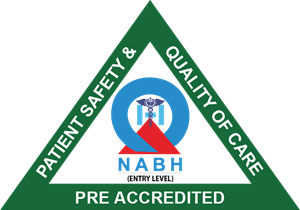- Home
- About
- Specialities
Centers of Excellence
- Facilities
- Procedures
Procedures
- Doctor List
- Health Packages
- Contact


Vaginal delivery is the most common type of birth. When necessary, assisted delivery methods are needed. While labor can be a straightforward, uncomplicated process, it might require the assistance of the medical staff. This assistance can vary from use of medicines to emergency delivery procedures.
What are some assisted delivery procedures that might take place during my labor?
The procedure your doctor might use will depend on the conditions that might arise while you are in labor. These assisted delivery procedures can include the following:
An episiotomy is a surgical incision made in the perineum (the area of skin between the vagina and the anus). The incision enlarges the vaginal opening to allow the baby’s head to pass through more easily and to prevent tearing of the mother’s skin. Most women will not need one. This is reserved for special circumstances.
There are two types of incisions: the midline, made directly back toward the anus, and the medio-lateral, which slants away from the anus. A local anesthetic might be used in mothers who do not opt for an epidural during labor.
An amniotomy is the artificial rupture of the amniotic membranes, or sac, which contains the fluid surrounding the baby. The amniotomy can be done either before or during labor. An amniotomy is usually done to:
Your healthcare provider will use an amniohook, which looks like a crochet hook, to rupture the sac. Once the procedure is completed, delivery should take place within 24 hours to prevent infection.
Induction of labor usually means that labor needs to be started for a number of reasons. It is most often used for pregnancies with medical problems or other complications. Labor is usually induced with Pitocin®, a synthetic form of the drug oxytocin given intravenously.
Medical reasons for inducing labor might include:
Fetal monitoring is the process of watching the baby’s heart rate. This can be external or internal.
Forceps look like two large spoons that the doctor inserts into the vagina and around the baby’s head during a forceps delivery. The forceps are put into place and, the doctor uses them to gently deliver the baby’s head through the vagina. The rest of the baby is delivered normally.
A vacuum extractor looks like a small suction cup that is placed on the baby’s head to help deliver the baby. A vacuum is created using a pump, and the baby is pulled down the birth canal with the instrument and with the help of the mother’s contractions. The pump can often leave a bruise on the baby’s head, which typically resolves over the first 48 hours.
| -- | -- |
Get to know our dedicated group of board certified doctors with exemplary qualifications, here to assist you on your healthcare journey.
These are stories that involves resilience, persistence & personal strength. Overcoming odds, difficulty and of course challenges of health, these stories ought to inspire us to look beyond the difficulties because there is always more to our lives than just challenges


You can choose to walk in to meet our doctors in their OPD or better still to book your appointment on line. You don’t need to wait. We have specialists in almost all fields of modern medicine.
We have rendered services in Homoeopathy for over 5 decades.
© copyright 2021 | All rights reserved